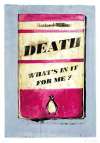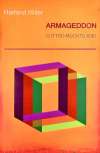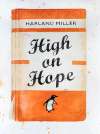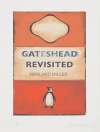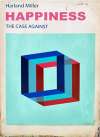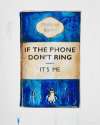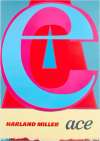Fuck
Art, Let’s Dance
Find out more about Harland Miller’s Fuck Art, Let's Dance, browse prints & editions for sale & view the works wanted by active buyers right now.
Harland Miller Fuck Art, Let’s Dance For sale
Fuck Art, Let’s Dance Market value
Auction Results
| Artwork | Auction Date | Auction House | Return to Seller | Hammer Price | Buyer Paid |
|---|
Sell Your Art
with Us
with Us
Join Our Network of Collectors. Buy, Sell and Track Demand
Meaning & Analysis
Miller was inspired by the Penguin paperbacks, closely bound to human character and a sense of community, as well as their inherent position in his country’s collective cultural consciousness, celebrating these ideas into his own work. Penguin books have secured an important place in Britain’s recent history; they first started publishing in 1935, and at the time the humble paperback was the property of the working classes, holding a huge amount of subversive power. A revolutionary way for the population to read books, the rise of the Penguin paperback came to stand for the widely accessible ownership of literacy in the British public, and the brand itself also quickly became a collectible.
Offensive language, as seen here in the present work, is paradigmatic of Miller’s artistic practice. His father wouldn’t tolerate swearing, and it still bears the ability to shock an audience; Miller explains, “people read before they can stop themselves.” Fuck Art, Let’s Dance is also self-referential, in itself a paradox between object and text. When asked where the titles from his books originate from, Miller says “nowhere in particular. Everywhere, anywhere.” He prefers for the viewer to connect to the phrases personally, and draw their own individual interpretations rather than imposing his own meaning upon them. The titles are often provocative or poignant, subversively sociopolitical, sometimes referencing the original author, whilst at other times, as in the present work, citing Miller himself as their creator. He also references catchphrases from popular culture and triggering a ring of distant familiarity.
Miller places heavy emphasis on the text in his works, and in fact first achieved widespread critical recognition as a writer as opposed to an artist, with his debut novel, Slow down Arthur, Stick to Thirty published in 2000. Then in 2001, merging his interests in image and text, Miller began creating the series of works based upon the Penguin book covers, which he picked up from thrift shops during his time spent living in Paris, but that also reminded him of his childhood in the North of England. Unable to understand the titles in French, he began to fabricate his own titles. He explains, “you can really say anything you wanted in the middle panel, because people are already used to the form of the Penguin book, so in that way the text carried more weight than the painting.” Miller was able to incorporate his love of classic literature with painting. Fuck Art, Let’s Dance is a typical example from this body of work, which combines figurative painting with elements of popular culture and literary imagery. The faded cover, torn edges and stained, smudged pages nostalgically recall a lifetime history of love and use, visually referencing our intimate, long-standing relationship with text and language, a visceral, physical connection between person and page that passes through the generations. The American painter Ed Ruscha is a clear influence for Miller, marrying text and image in a radical juxtaposition using slogans and phrases to compliment his paintings. Mark Rothko, too, is another such acknowledged source of inspiration for the British artist, whose work demonstrates the use of bands of colour such as the yellow and white seen in Fuck Art, Let’s Dance.
The traditional design and distinguished logo motif, muted colours and worn surfaces are testament both to a deeply personal connection with literature that is conversely also familiar to a wide ranging audience, and Miller’s Penguin works have subsequently become hugely popular with collectors. Penguin Random House, of course, feature a series of works commissioned for Miller in their corporate collection, and his work is also found in the private collections of established celebrities. Increasingly desirable, Miller’s classic works have made significant prices at auction, and an original Penguin work from George Michael’s collection, Incurable Romantic Seeks Dirty Filthy Whore (2007), recently sold at Christie’s in for £237,500, far exceeding its original estimate, showing the artist to be highly sought after as an investment. In much the same way that the paperbacks themselves were sought after in the 1930s and ‘40s, Miller’s works have adopted a similar collectability today, occupying a significant place in the contemporary art marketplace, with the artist himself staking his name within the recent trajectory of hugely successful and important British artists.
Harland Miller currently lives and works in London, where he received both his BA and MA from the Chelsea College of Art. He recently curated the group exhibition, You dig the tunnel, I'll hide the soil in homage to Edgar Allan Poe, to mark the bicentenary of his birth. Staged across two venues, White Cube Hoxton and Shoreditch Town Hall. He has also had solo exhibitions at the White Cube and the Royal Academy of Arts, both London, as well as the Marianne Boesky Gallery in New York amongst others.
